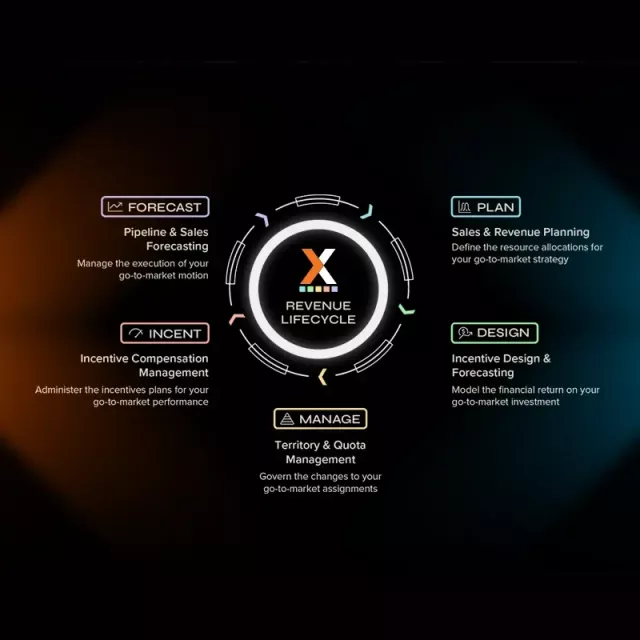
This content was originally posted to LinkedIn on 8/2/21.
A sales forecast is the starting point for all business plans as it is needed to structure the business investments. The forecast is like your compass – every function in the business is impacted by it. Leadership needs the forecast to build the budget which includes the guidance the CFO is giving to owners and investors about their return. It is also needed to target how much is going to be invested in new product and is available for reinvestment back into the business. The company will need the sales forecast to determine pricing and the levels of profit that need to be kept and expected unit sales.
In the same way that a forecast needs to be divided up into quotas, a forecast is needed to determine sales sizing levels – when the territories and unit sales are combined with capacity estimates (the volume per rep) you get the number of reps required – the sales staffing plan. This is then needed to determine the size of your HR team and training investment. It will provide a roadmap to marketing on how to support the sales team in achieving their goals. It will be needed to determine staffing levels for customer support, product development and human resources. It will be used as a marker for under and over-performance.
When the concept of inventory is applicable, the sales forecast is needed to determine how much inventory to order and store. You will need the forecast to determine how much to order, especially if there is a manufacturing process that takes time. Communications and support infrastructure that needs to be built to support a business as it scales are determined by the forecast. Reporting tools that tell you how you are tracking to the forecast, inventory tracking and sales tracking all need to be built or the business will not be able to achieve the sales forecast.
The sales forecast is important. Therefore, it needs to be as accurate as possible, and accuracy is highly dependent on the method used to create the forecast. So, what is the best method to generate the forecast?
That really depends on the data that you have available.
Forecasting Methodologies Are Dependent On Data
Data availability is the biggest limiting factor for the type of forecasting methodology that can be used. It is probably this reason that there doesn’t appear to be a forecast methodology that is superior to another – just methods that can be used and those that can’t. Data sources that are usually available – historical and pipeline – are not always reliable indicators of future sales. For this reason, leveraging multiple forecast methodologies is required so the results can be compared and contrasted to ‘stress test’ the data and determine the most accurate projection.
There are many common methods that are used, but they generally fall into four categories: top down, bottoms up, historical trending and this ‘other bucket’ where external information is gathered.
Top-down Forecast Methodology
This method looks at the engine the company should have rather than what the current engine can produce. A top-down forecast begins with pressure… the pressure of competition and rates of return. Corporate leadership reviews market returns and growth from similar companies. Company structure is analyzed, prior strategic moves need to yield results, customer trends and economic factors are assessed, and a rate of growth is produced by the leadership team. If market rates of return data is not available from survey or public data then corporate leadership will look at available investments to determine what a competitive rate of return should be.
Finance will look at historical data to determine run-rate results and proffer a recommendation on where the growth can come from. The top down approach will often ignore what the current make-up of the sales team is and focus on where the company ‘should be’. The inputs are focused on assessing market potential – comparable companies, industry surveys and projections, and market share capture rates. Leadership will then look internally to see what changes can be made to the company structure (e.g., how the sales team covers the market) to increase the rate of return in the market.
Finance will often assess prior investments by product line to determine where there is potential growth, or they will look to the market to acquire growth. After all of this is done, they will look at sales leadership to determine what they feel they can produce. This is the bottoms-up forecast.
Bottoms-up Forecast Methodology
While top down forecast is usually done once a year, the bottoms up / pipeline forecast is done more often (if the capability exists, it can be done real-time). This method looks at the CURRENT sales engine and what it is producing. Remember, the top down forecast is not looking at what the current engine is capable of producing, while a bottoms-up forecast is the view from the trenches. The pipeline is analyzed, as are the probabilities of closing prospects that enter the pipeline. Bottoms-up forecasts are much more complicated to calculate as there is usually a wealth of data that can be accessed to form a very accurate picture of where the current sales engine is heading.
Consider this – the CRM feeds the current pipeline data which is then analyzed against historical (or assumed) close rates. The close rate can be modified based on the type of product or customer. It can be further modified by the time of year the lead is generated and how the lead was gathered. Each of these close rates can vary by territory type or rep tenure. This is a ton of math! This type of forecast is extremely data heavy and a tool is highly advisable. Current leading edge tools leverage AI to account for all these situations.
The bottoms-up forecast and top down will not be equal – simply look at the expression on the sales leader’s face at the beginning of the year when they get their number for proof of this.
This gap is completely expected and necessary in a growing company. While the bottoms-up and top down analysis leverage different methodologies to arrive at a forecast, the key difference is that the top down approach assumes that the sales engine will need to produce more to attain the required results – capture more of the market and beat competition. The bottoms-up forecast doesn’t do this – it looks at the pipeline and close rates, not how to expand the pipeline or change the close rates. This is where the gap between the top-down and the bottoms-up comes from, and this creates the need for sales leadership to come-up with a way to fill that gap. Enter the sales plan!
Picture it as the shopping list that the Sales Leader makes.
Top-Down - Bottoms-up = The Sales Plan
The sales plan outlines the investments that the sales team will need in order to drive the growth required to fill the gap between the top-down and bottoms-up forecasts. The sales plan is the portfolio of changes and investments needed to achieve growth. While they can be leveraged separately, they really are pieces of a puzzle that fit together to drive the sales growth of a company. These are all of those sales effectiveness levers / force multipliers you always hear about:
- Sales force size – how many arms and legs there are
- Compensation plans – how the pay is reallocated from low to high performers to drive growth; pay compared to market
- Territory assignments and size – available customer face time versus travel; workload, and capacity
- Job roles definitions and how they team – responsibilities in the sales process; rules of engagement
- Quota allocation – productivity expectations
- Sales org structure – span of control; sales support
- Tech investments to support all of this – customer analytics; pay and performance dashboards
When changing one of these productivity drivers it is exceptionally difficult, if not impossible, to avoid changing others. Most of the attention is paid to the sales compensation plan design as that is where the money is, but each of the sales effectiveness levers in the sales plan is effective at driving growth. The sales plan needs to be constructed as a way to reorganize the go to market strategy to gain productivity.
Keep in mind that the even the best sales plan lasts 3 months – until the end of Q1. There will need to be adjustments – SPIFs, contests, transfers, territory adjustments - that are used to fill the gaps. These gaps may be caused by things such as a market that is not performing as well as expected or new rep ramp-up times taking a bit longer.
What if there is little faith in the pipeline data to leverage it in a bottoms-up forecast , or there isn’t enough market data to conduct a top-down forecast? There are other forecast methodologies that can be leveraged.
Other Useful Forecasting Methodologies
The bottoms-up and top-down methodologies described above are by no means the only ways to forecast. There are other forecast methods, and these are widely used (often in combination with the top-down and bottoms-up). Once again, the methodology used is largely dependent on the data that is available.
- Historical trending uses readily accessible information and people love a good trend line! Most sales teams know intuitively that there are trends, and leveraging historical information puts some science behind this. The simplest method uses a moving average – for example, the average of the past three years. This method is usually enhanced by giving more importance to the most recent year or season in the weighting – for example the same period prior year.
- Exponential smoothing is familiar to anyone who has seen time graphs – that erratic line moving wildly up and down but generally trending upwards. The line piercing through the center of the up and down dots that shows the general upward movement is the exponential smoothing line.
- Statistical forecasts are used in combination with one of the other methods and will show the probable sales outcome and the range (or standard deviation) around the forecast. For example, there is a 95% probability that sales will be between $10M and $11M. Let’s be honest, whenever we hear this kind of forecast we are expecting the thing to be wrong…
- Bootstrapping is the Monte Carlo method of forecasting – when we take historical sales growth rates, mix them up a few thousand times and generate a likely range of growth rates.
What if There is No Available Historical Data for Forecasting?
The final types of forecasts are not used as often and are usually used when historical information is not available or accurate.
- Companies will run a test market to generate data that can be used to create a forecast. This method can produce exceptionally accurate results but due to the significant delay required to launch a new product or strategy it tends to be infrequently used.
- A team of experts (internal and external) will be polled to create a forecast – academics fiercely advocate for this method. This is most likely due to the fact that academics are hoping they will be the ones called upon as experts.
- The final method is the sentiment survey – where you poll potential customers to see if they anticipate buying from you next year. These used to be hugely popular in manufacturing and consumer goods, but they seem to have lost some steam in the past few years.
The sales forecast is the backbone behind the company budget, and as such accuracy is of the paramount importance. Remember, it is the closest to the hole and under-estimating sales can be devastating to a company. The company will be understaffed, inventory and raw goods will be too low and there will be delays in delivery. Any sales overage to the forecast will be difficult to retain. Over-estimating sales will mean that the company is carry extra resources and cost. This reduces the company’s margins and the investor’s rates of return.
Finally, remember that it isn’t all numbers. Experience carries a tremendous amount of weight. Experience is the ability to see through the numbers at leading indicators and understand what they will mean to the business and any forecast. I have been put in my place many times by veterans who can read the tea leaves better than I can read two weeks’ worth of number crunching.


